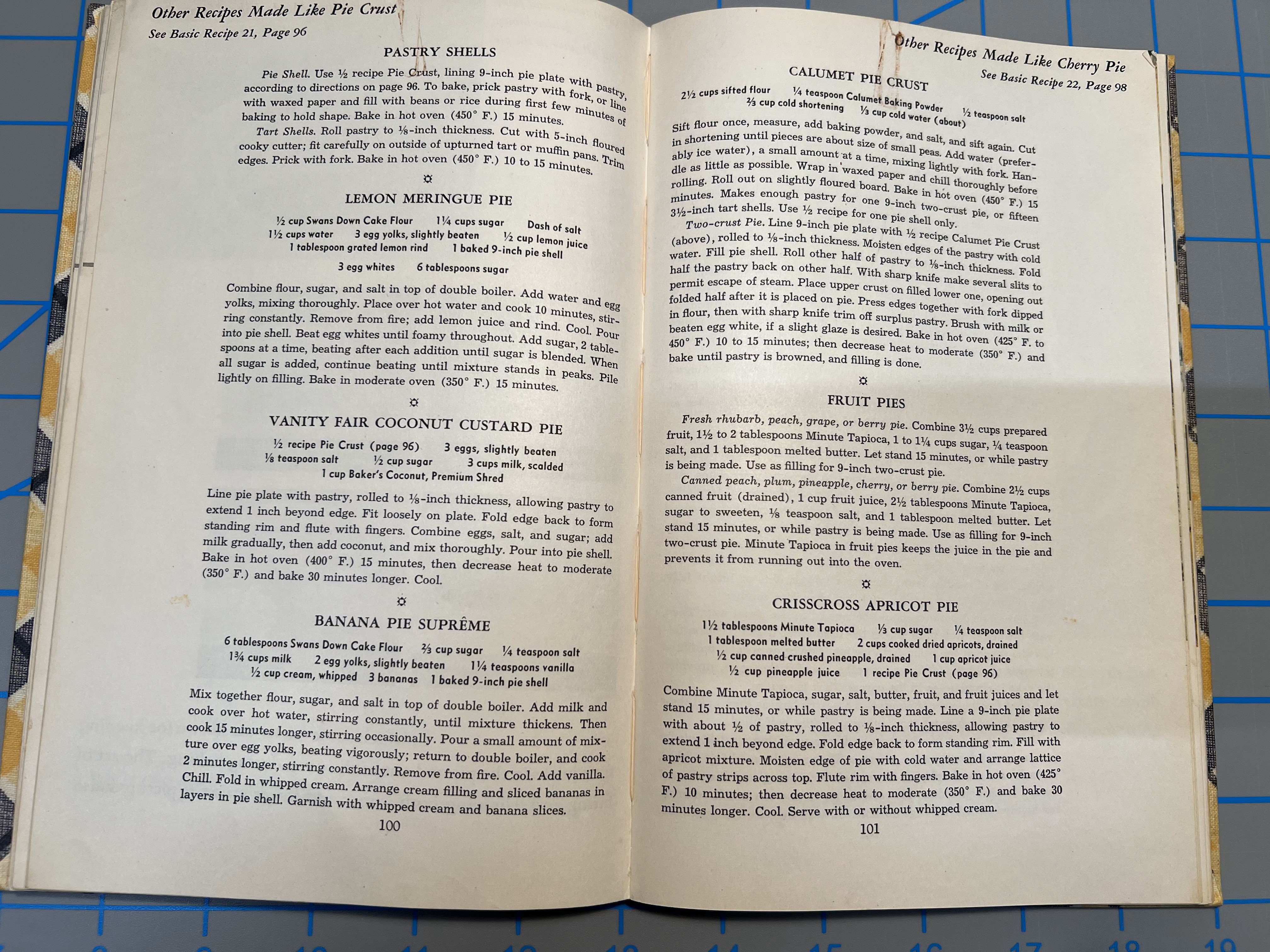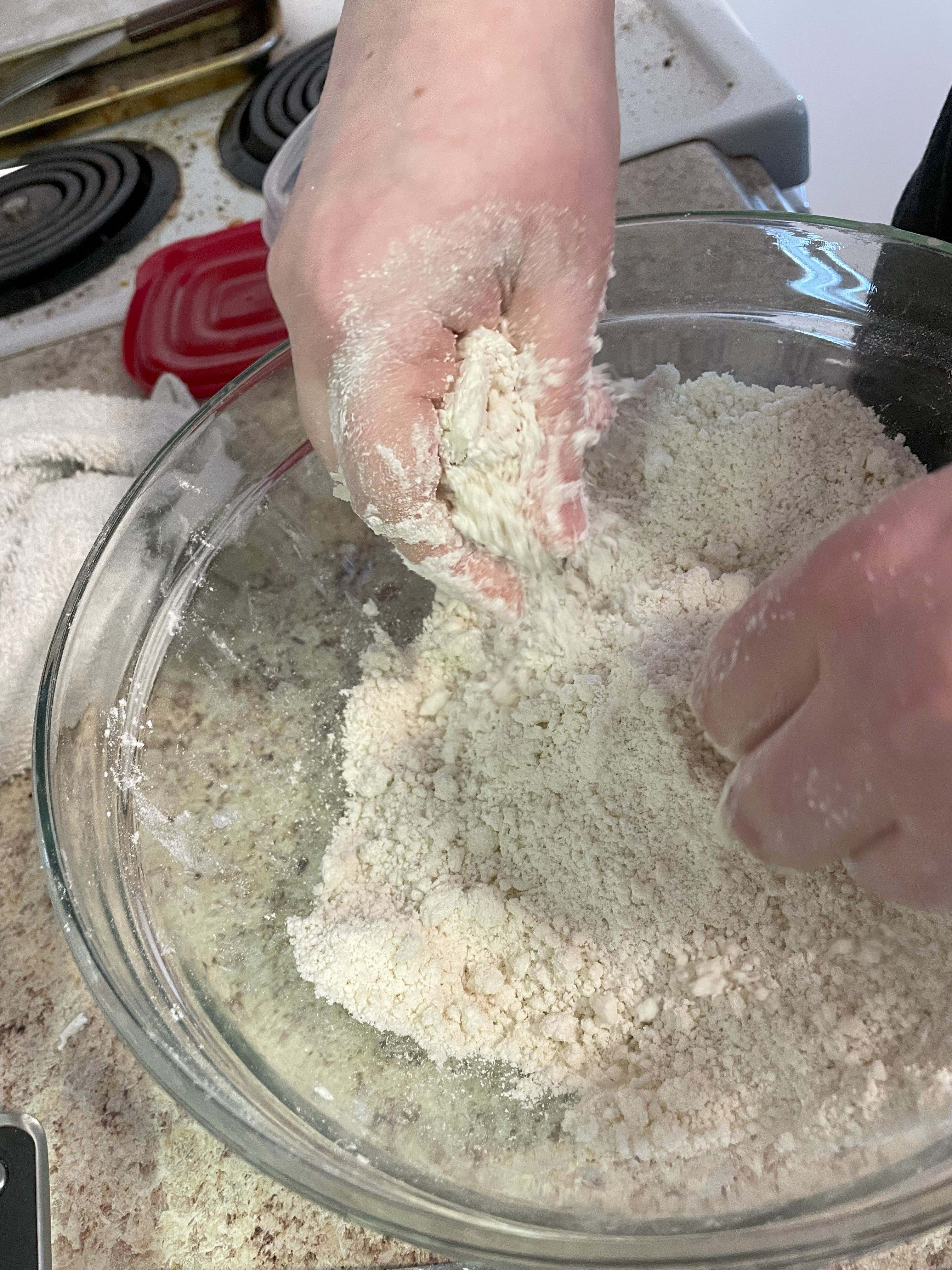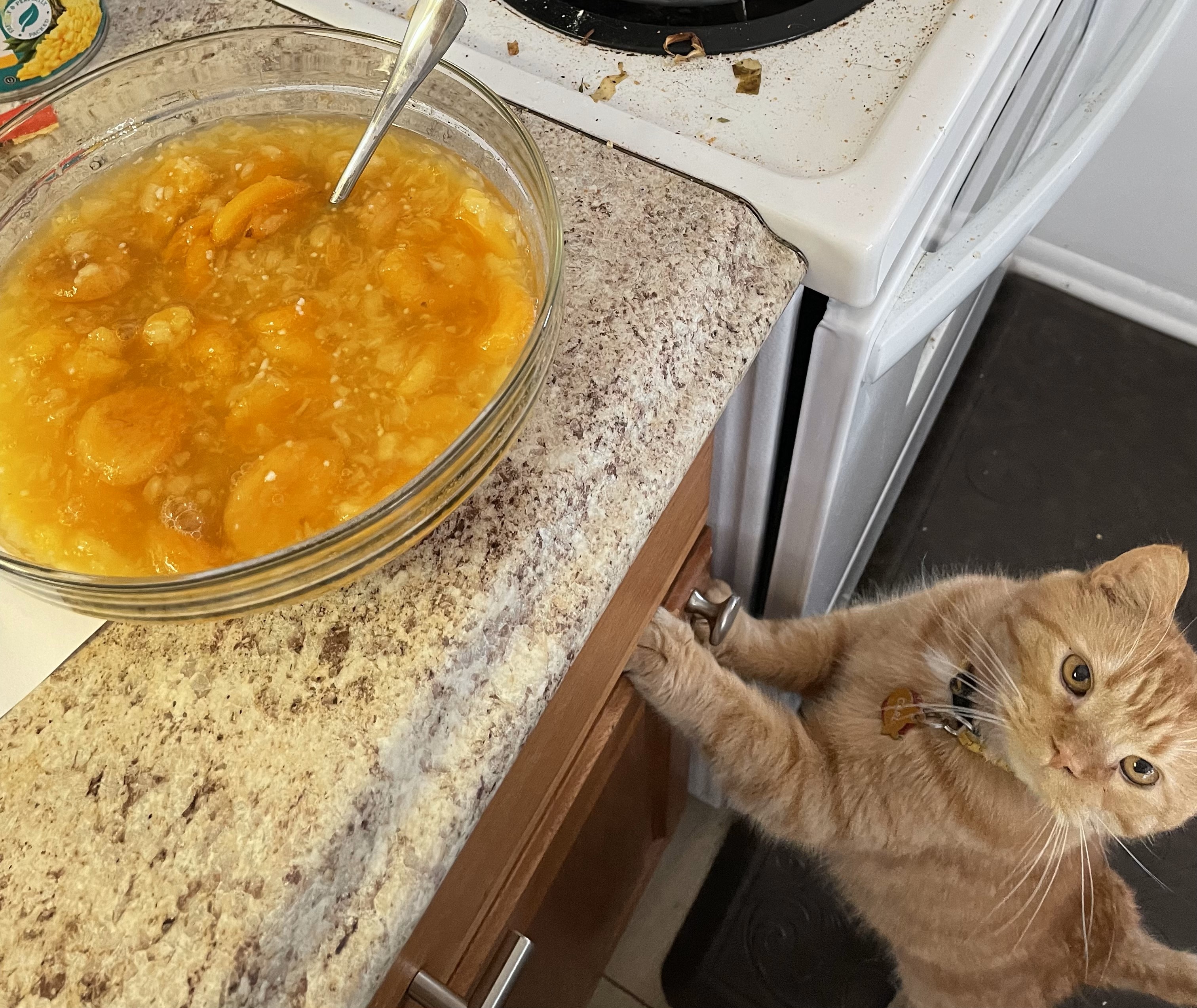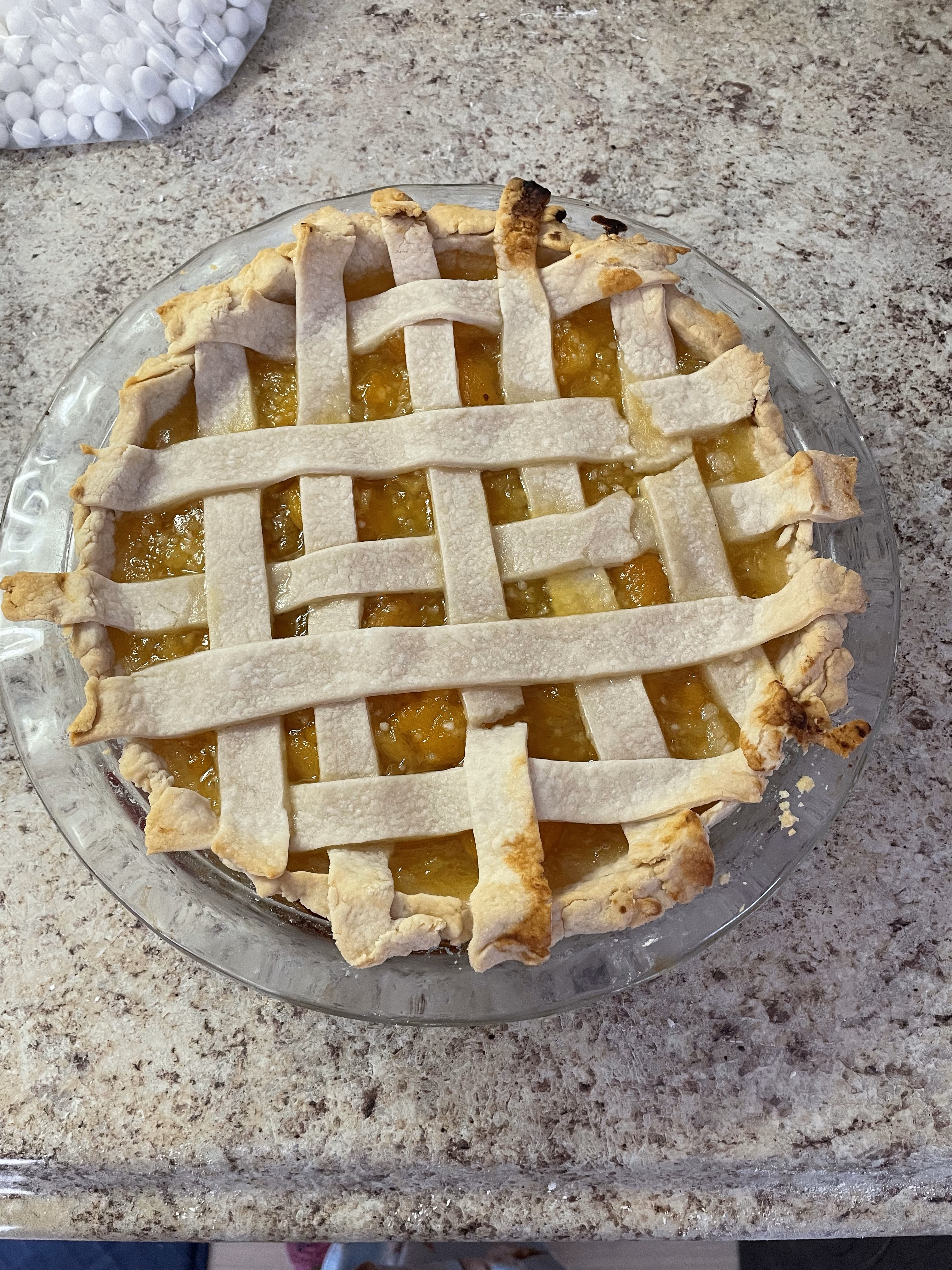Happy Pi(e) Day! As the resident nerd in high school, Pi Day was always one of those holidays that I enjoyed reminding the rest of my classmates of, and what better way to celebrate than with one of my favorite desserts, pie! (Although, I like all desserts personally, I have a sweet tooth and will never turn down something sweet).
In my capacity as one of the Collection Services Support Specialists for Special Collections, I have been the go-to person for almost all post-cataloging activities since arriving at the Library in July 2023, meaning that I have been getting very close with new acquisitions once they arrive back from Technical Services. One of the main collections that has been coming across my desk almost constantly since July has been additions to our Janice Bluestein Longone Culinary Archive. In other words, I’ve been seeing a lot of cookbooks! So, when Juli McLoone sent out an email announcing the annual Pi(e) Day celebrations, I immediately knew I needed to participate. The theme being fruit pies, I challenged myself to find a recipe using a fruit not commonly found in pies at the grocery store (apple, cherry, blueberry, peach, you get the idea), and I wanted this recipe to come from a book in our collection. Enter All about Home Baking: Cakes, Cookies, Pies, Pastries, Biscuits, Muffins, Quick Breads, Frostings, Table Service, Party Menus. The edition in our collection is the second edition created by the General Foods Corporation circa 1933. I thought this was perfect as I started leafing through the book as it seems to have been created to help the home chef learn basic skills and then build upon them with foolproof recipes. While I was searching through the section on pies, I came across the recipe for pie crust with a simple cherry filling. Well dang, I wanted to stay away from fruits you commonly find in pies in the grocery store! Thankfully, I kept going, because on the final page of the section was the recipe for Crisscross Apricot Pie. Racking my brain, I could not pinpoint a single time in my life where I have had or even seen an apricot pie. Perfect! Thankfully this book was scanned and uploaded to Hatitrust from Cornell University’s collection, so I printed out the two pages I needed and decided to get to work.
I’ll be the first to confess, growing up, my mom always “cheated” when it came to pie crust. She found it a lot easier to just buy the pre-made rolled up Pilsbury pie crusts from the grocery store around the holidays instead of trying to make her own crust amongst the vast number of other preparations she was making to the holiday meals. My mom has always loved to cook. She calls Thanksgiving the “Cooking Olympics” and embraces it as one of her favorite times of the year. So, from a very young age, my younger sister and I were encouraged to be in the kitchen to “help,” and as we got older, encouraged to learn and take on responsibility within her kitchen. Pretty early on, I found a penchant for baking. People say that baking is like chemistry, whereas cooking is like art, and I agree wholeheartedly with that comparison. Chemistry, math, and logical thinking, along with step-by-step instructions and measurements, always came easy to me, so baking was a natural fit. I became the go-to person when it came to most baking as I got older and am still frequently asked to contribute my Snickerdoodles to family gatherings and cookie tables at weddings (a nice little Pittsburgh tradition with an amazing history if you are not familiar with the cookie table). However, I have never attempted my own pie crust. This scared me slightly, but luckily my partner Ryan went to culinary school and was there to assist me if I ran into any problems.

Crisscross Apricot Pie recipe from All About Home Baking.
Cutting fat into flour is one of those skills that has managed to elude me thus far in my life. A couple of years ago for the Christmas holidays, I tried to make a variety of flavored shortbreads to give out to the rest of the admin department I was working for at the time, and it went disastrously. The dough would not hold together, and once baked, they became crumbly and unruly when it came to trying to get even pieces to distribute out to coworkers. They tasted amazing, but they looked like a young child tried to make them. I also attempted scones once for Ryan and myself during a bout of snow days in Pittsburgh a few years ago. Mind you dear reader, this was from a mix, all I had to do was mix in the butter, shape the dough, and bake. They were almost too crumbly to eat in one piece, but luckily when you’re just dunking them into your teacup, you expect a few crumbs to settle to the bottom of your tea. Obviously, the problem was with me and not these recipes or mixes, so asking for Ryan’s help when it came to preparing the pie crust was key, and I leaned on him a lot during this process. His first question to me was why we were using Crisco shortening and not butter to make this dough. There were two reasons for this: firstly, that’s what the recipe calls for, and I wanted to stick as true to this recipe as possible; secondly, food allergies. As a food allergy sufferer myself, it is imperative to me that I try to create and bake treats for those around me without using certain major allergens, dairy being one of them (peanuts and tree nuts being the other two I try to avoid, as I myself am allergic to peanuts). His second question was why we were using cake flour instead of good ol’ all-purpose flour. The recipe specifically called for cake flour, so that question I had no answer for; I told him to stop asking questions and just help me. Advising from afar, my mother also recommended that I make the fat (Crisco in this case) as cold as I possibly could, so after cutting a stick of Crisco into smaller pieces, I threw them in a container in the freezer. Ryan lauded me for this idea and graciously showed me how he prefers to cut fat into flour. Using my hands, I tried to mimic him under his watchful gaze. After a few minutes of mixing the two, he looked and said it all looked good to him and explained what exactly cutting fat into flour is. This was crucial, as I never really understood the purpose or what one is trying to achieve during this process. “You are trying to coat all of the flour in the fat” he said, which made so much sense in my mind and gave me a solid idea of what the flour should look like once completely mixed. There was finally a reason why it always looks so crumbly! We then finished the dough by mixing some ice-cold water into the fat and flour mixture, shaped it into a nice disk, wrapped it up in some wax paper and plastic wrap, and gently set it in the fridge to wait for a few days until I am ready to bake off this pie.

While I could have used a food processor to complete this process, I felt that actually "getting my hands dirty" may be a little more fun.
My only gripe with this recipe is a personal one: it calls for “cooked dried apricots, drained,” but provides no recipe to cook them. This has happened to me once before and even back then it irked me, as I like clear, concise instructions that should include EVERY step of a process. Sometime after my great-grandmother passed away, we came into possession of her recipe card box. I don’t particularly remember my great-grandmother baking or cooking a ton, as I was pretty young when she passed, but the one thing I do remember is my great-aunt Kay’s raisin cookies. On the surface, these cookies may not sound appetizing to some, but trust me, they were one of the things I remember most about my short time with Great-grandma and Kay. These cookies consist of two soft, buttery, almost sugar cookie-like cookies sandwiched around a sweet raisin filling; simple, but amazing. When I was around 10 or 11, I came across Great-grandma’s recipe card box in the basement with my mom’s cookbook collection. I started leafing through them and found a card labeled “Kay’s Raisin Cookies.” I immediately knew I had to make them and took the card to my mother to ask for her assistance. The recipe was simple and easy to follow, except it gave NO instructions on how to make the raisin filling! I about lost it, but my mom was there to explain that the filling is probably just stewed raisins. The confused look on my face was enough for her to realize she needed to walk me through the process, despite it being rather simple in hindsight. Raisins, water, and sugar. Place in pot on stove and simmer until the juice becomes thick and the raisins plump. See, simple! Upon seeing the “cooked dried apricots, drained” in this recipe, I was reminded of just how easy stewing dried fruit can be: fruit, water, sugar. Place in pot on stove and simmer until the juice becomes thick and the fruit plump. Pausing whatever documentary I had droning on in the background of my lazy Sunday morning, and making sure the cat was comfortable and asleep enough to not bug me for his dinner while I was in the kitchen, I decided to go on instinct and stew my apricots without any guidance. Apricots, water, sugar. Place in pot on stove and simmer until the juice becomes thick and the apricots plump.

Carl definitely thought the pie filling was for his dinner. He was disappointed when I said it's people food.
Everything else came together rather quickly: the filling consisted of the stewed apricots, crushed pineapple, pineapple and apricot juices, sugar, a pinch of salt, and tapioca starch. The only change I made to this recipe was omitting the tablespoon of butter. I wanted to keep the recipe allergy friendly, and the butter was just for a fat component in the filling. While that was resting, this is where things got rough. I thought I did okay when it came to rolling out the dough and fitting it into the pan, but apparently, I either rolled it too thin or it cracked because after the pie came out of the oven, I noticed that some of the juice had gotten between the side of the pan and the crust. I also got frustrated with the lattice on the top and gave up trying to make it pretty. It is just going to be cut into and eaten after all.

The completed pie.
Food is interesting to me, the way it connects us through time and space. I have a background in anthropology and two of the best classes I took in college were centered around food and how it connects us. Food also can create a cultural identity. While there is nothing super special about a pie pe se, it’s a prevalent dessert here in the United States, just the magic of copying a recipe from c. 1933 and having it turn out decent made me feel a connection to all of the home cooks before me, and especially those who ultimately taught me how to cook and bake. I dedicate this to you, mom. Thank you for taking the time when I was young to let Maddie and I play around in the kitchen!